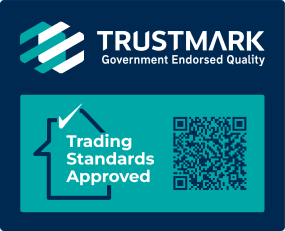Understanding Part L Compliance: A Comprehensive Guide for Building Professionals
Building professionals play a crucial role in ensuring that buildings are energy efficient and environmentally sustainable.
Part L compliance, a key aspect of building regulations in many countries, focuses on the energy performance of buildings.  Understanding and achieving Part L compliance is essential for building professionals to ensure that buildings meet the required standards and contribute to a greener future.
Understanding and achieving Part L compliance is essential for building professionals to ensure that buildings meet the required standards and contribute to a greener future.
In this comprehensive guide, we will explore everything you need to know about Part L compliance, including the role of Energy Performance Certificates (EPCs) and how to navigate the complex regulations. So, whether you are an architect, engineer, contractor, or developer, this guide will provide you with the knowledge and tools to ensure that your projects meet the highest energy efficiency standards.
What is Part L Compliance and why is it important?
Part L Compliance refers to the specific section of building regulations that focuses on the energy performance of buildings.
In 2019, the Energy Performance in Buildings Directive (EPBD) mandated Nearly Zero Energy Buildings (NZEB) and for this reason Part L underwent an update to comply with this requirement. It is a major step forward in the roadmap toward the Future Homes Standard due to come into effect in 2025.
It sets out the standards and requirements that buildings must meet to ensure they are energy efficient and environmentally sustainable.
Part L Compliance is important for several reasons. Firstly, it helps to reduce greenhouse gas emissions and combat climate change by promoting the use of efficient technologies and practices. Additionally, energy efficient buildings consume less energy, resulting in lower energy bills for occupants and reducing the overall strain on the energy grid.
Furthermore, achieving Part L Compliance demonstrates a commitment to sustainability and responsible building practices. It enhances a building professional’s reputation and can attract environmentally-conscious clients and investors.
In summary, Part L Compliance plays a vital role in creating a greener future, reducing energy costs, and meeting the expectations of clients and stakeholders. In the following sections of this guide, we will delve deeper into the specific requirements and strategies for achieving Part L Compliance.
Key regulations and standards in Part L Compliance
Understanding the key regulations and standards that make up Part L Compliance is crucial for building professionals looking to ensure energy efficiency and environmental sustainability in their projects.  These regulations and standards provide a framework for achieving compliance and serve as guidelines for best practices.
These regulations and standards provide a framework for achieving compliance and serve as guidelines for best practices.
The first key regulation within Part L Compliance is the requirement for energy performance certificates (EPCs). EPCs provide an assessment of the energy efficiency of a building, rating it on a scale from A to G, with A being the highest level of efficiency. Building professionals need to ensure that all new or renovated buildings have a valid EPC to demonstrate compliance.
Another significant standard within Part L Compliance is the minimum energy performance requirements for certain building elements. This includes standards for insulation, heating systems, lighting, the building fabric, and renewable energy technologies. Adhering to these standards ensures that buildings are designed and constructed to be as energy efficient as possible.
In addition to these standards, Part L Compliance also includes regulations regarding air tightness, ventilation, and controls for heating and cooling systems. These regulations focus on ensuring that buildings are properly sealed, adequately ventilated, and equipped with efficient temperature control systems.
By familiarising themselves with these key regulations and standards, building professionals can effectively plan and execute projects that prioritise energy efficiency and meet the requirements of Part L Compliance. In the next blog section, we will explore the specific strategies and practices that can help achieve compliance.
Understanding the role of building professionals in Part L Compliance
Building professionals play a crucial role in ensuring Part L Compliance. Their knowledge and expertise are essential in designing and constructing buildings that meet the required energy performance standards. By understanding the regulations and standards outlined in Part L, building professionals can effectively plan and execute projects that prioritise energy efficiency.
One important aspect of their role is conducting energy assessments and obtaining energy performance certificates (EPCs). These assessments evaluate a building’s energy efficiency and provide a rating that demonstrates compliance. Building professionals must ensure that the buildings they work on have valid EPCs to meet regulatory requirements.
Additionally, building professionals are responsible for adhering to the minimum energy performance requirements for various building elements. This includes implementing efficient insulation, heating systems, lighting, and renewable energy technologies. They must also ensure proper air tightness, ventilation, and controls for heating and cooling systems.
By understanding and implementing these regulations and standards, building professionals can contribute to the overall goal of achieving energy efficiency and environmental sustainability. In the next blog section, we will delve into the specific strategies and practices that building professionals can adopt to achieve Part L Compliance.
Steps to achieve Part L Compliance
Next Section: Steps to achieve Part L Compliance
Now that we have established the importance of building professionals in ensuring Part L Compliance, let’s dive into the specific strategies and practices they can adopt to achieve it. By following these steps, building professionals can contribute to the overall goal of energy efficiency and environmental sustainability.
- Familiarise yourself with Part L Regulations: The first step is to thoroughly understand the regulations outlined in Part L. This includes understanding the minimum energy performance requirements for different building elements, as well as the specific criteria for energy assessments and EPCs.
- Incorporate Energy Efficiency into Design: During the design phase, prioritise energy efficiency by selecting materials and technologies that promote sustainability. This includes utilising efficient insulation, energy-saving lighting systems, and renewable energy sources wherever possible.
- Optimise Heating and Cooling Systems: Ensure that heating and cooling systems are designed and installed to be energy-efficient. This includes choosing energy-saving HVAC systems and implementing effective controls for temperature regulation.
- Enhance Building Envelope: Pay attention to air tightness and proper insulation of walls, roofs, and floors. This can significantly reduce heat loss and improve overall energy performance.
- Monitor and Maintain: Once the building is completed, regularly monitor and maintain its energy systems to ensure they are operating at peak efficiency. Conduct periodic energy audits to identify areas for improvement and implement necessary upgrades.
By following these steps, building professionals can make a significant impact in achieving Part L Compliance and contributing to a greener and more sustainable future. In the following sections, we will delve deeper into each step, providing you with the insight and guidance you need to successfully navigate the world of Part L Compliance.
Common challenges and how to overcome them
Next section: Common challenges and how to overcome them
While striving for Part L Compliance, building professionals may encounter various challenges that can hinder their progress. In this section, we will discuss some common challenges and provide effective strategies to overcome them.
- Limited Budget: One of the most common challenges is working within a limited budget. To overcome this, prioritise energy-efficient measures that provide the most significant impact. Look for cost-effective solutions and consider long-term savings potential.
- Lack of Awareness: Sometimes, building professionals may have limited knowledge or awareness of Part L Compliance requirements. Stay updated with the latest regulations and attend workshops or training programs to enhance your understanding.
- Resistance to Change: Implementing energy-efficient practices may face resistance from stakeholders who are resistant to change. Educate them about the benefits of energy efficiency, such as reduced operational costs and improved environmental sustainability.
- Complex Processes: Achieving Part L Compliance involves multiple processes and coordination among various stakeholders. Streamline the processes by clearly defining roles and responsibilities, and establish effective communication channels.
- Retrofitting Existing Buildings: Retrofitting existing buildings to meet Part L Compliance can pose unique challenges. Conduct a thorough assessment to identify areas for improvement and explore cost-effective retrofitting options.
By understanding these challenges and adopting effective strategies, building professionals can overcome obstacles and successfully achieve Part L Compliance. In the upcoming sections, we will discuss each challenge in detail and provide actionable solutions to support you on your journey towards energy efficiency and compliance.
The benefits of achieving Part L Compliance for building professionals
In the next section, we will explore the benefits that building professionals can gain by achieving Part L Compliance. Understanding these benefits can serve as motivation and provide a stronger justification for investing time and resources in meeting the compliance requirements. We will discuss the financial advantages, such as reduced operational costs and increased property value, as well as the environmental benefits, such as reduced carbon footprint and improved sustainability. Additionally, we will touch upon the positive impact on reputation and client satisfaction that comes with being a compliant professional in the industry. Stay tuned to learn how meeting Part L Compliance can bring numerous advantages to your career and business.
The importance of staying up-to-date with Part L Compliance regulations
As building professionals, it is essential to stay informed and compliant with the latest regulations, including Part L Compliance. The benefits discussed in this guide clearly demonstrate why investing time and resources in meeting these requirements is vital for your career and business.
By achieving Part L Compliance, you can significantly reduce operational costs through increased energy efficiency. This, in turn, can improve your bottom line and provide a competitive advantage in a market increasingly focused on sustainability. Moreover, meeting compliance standards will enhance your reputation as a professional committed to environmental responsibility, increasing client satisfaction and attracting new opportunities.
To stay ahead of the curve, regularly update your knowledge on Part L Compliance regulations. Attend industry conferences, participate in training programs, and collaborate with other professionals. By doing so, you can harness the advantages of compliance and position yourself as a leader in the industry.
Remember, being aware and compliant not only benefits you and your business but also contributes to a greener and more sustainable built environment.




